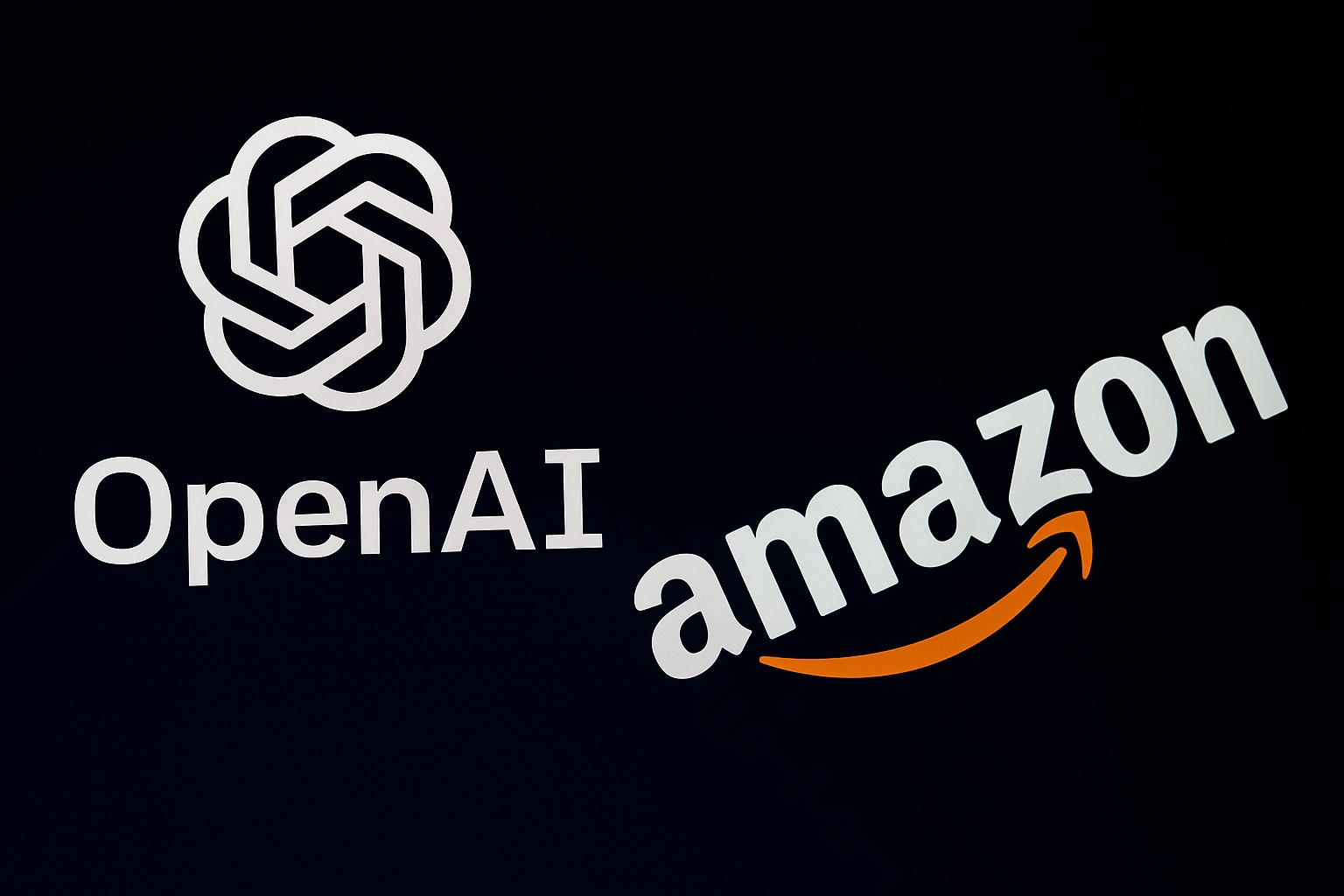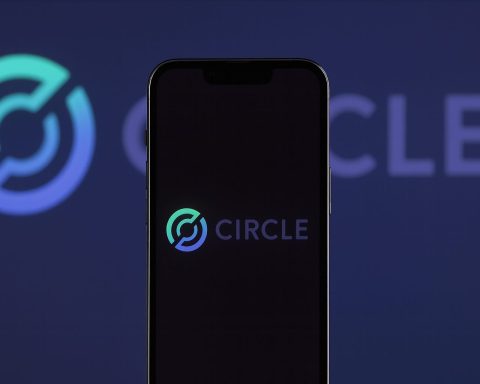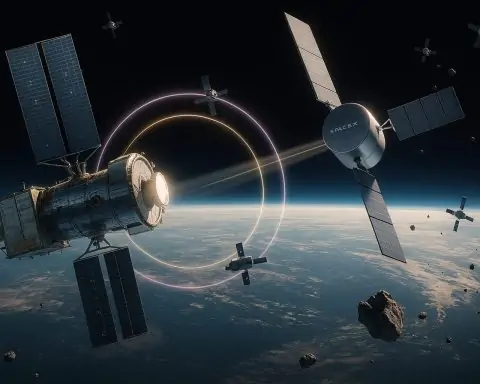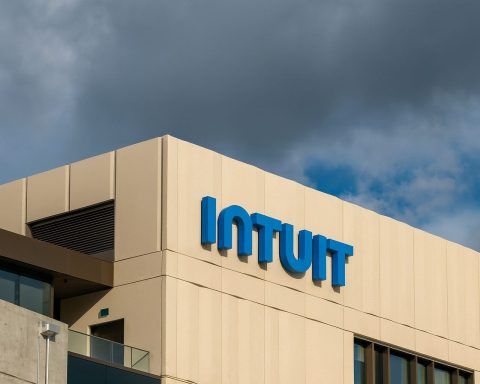- Massive cloud pact: Amazon Web Services (AWS) and OpenAI announced a seven-year, $38 billion strategic partnership for AI computing, giving OpenAI access to hundreds of thousands of NVIDIA chips on AWS’s infrastructure [1]. The deal lets OpenAI scale its AI workloads immediately on AWS and even expand to “tens of millions of CPUs” for future growth [2].
- OpenAI’s multi-cloud move: This landmark agreement comes days after OpenAI restructured to gain more financial and operational freedom from Microsoft, its prior exclusive cloud partner [3]. OpenAI has now lined up over $1 trillion in cloud and chip commitments across providers – including new deals with Amazon, Google, Oracle, and even chipmakers like NVIDIA, AMD, and Broadcom [4]. CEO Sam Altman aims to rapidly expand computing capacity, projecting $1.4 trillion in spending to build 30 GW of AI compute power [5].
- Stock soars to record high: News of the OpenAI deal sent Amazon’s stock price to an all-time high, jumping about 4–5% on Monday [6]. Amazon’s market value swelled by nearly $140 billion [7], adding an estimated $10 billion to founder Jeff Bezos’s fortune [8]. NVIDIA’s stock also ticked up ~2% on expectations of sustained AI chip demand [9].
- AWS’s AI credibility boost: Analysts call the deal “hugely significant” – a strong endorsement of AWS’s AI infrastructure capabilities [10]. It quells fears that AWS was lagging behind rivals in the AI race [11] and positions Amazon as a big winner in the booming generative AI market. One market watcher noted it’s “further proof the stock has become an AI winner” in investors’ eyes [12].
- Bubble concerns and outlook: The frenzy of multi-billion-dollar AI deals has supercharged Big Tech stocks and the Nasdaq, but also sparked debate about a potential AI hype bubble [13] [14]. OpenAI’s massive spending commitments, despite being currently unprofitable, have raised eyebrows on Wall Street [15]. Altman insists revenue is growing “steeply” and justifies the bets on future growth [16]. Experts say the pact underscores that the next phase of AI is as much about cloud servers and chips as it is about software, even as they caution about over-reliance on a single provider [17] [18].
AWS and OpenAI Ink a $38 Billion Cloud Partnership
Amazon Web Services and OpenAI unveiled a multi-year cloud computing deal that ranks among the largest ever in tech. Under the agreement – valued at $38 billion over seven years – OpenAI will run and scale its advanced AI workloads on AWS’s “world-class infrastructure” starting immediately [19]. In practical terms, AWS is provisioning OpenAI with vast computing capacity: on day one, OpenAI gains access to hundreds of thousands of NVIDIA GPU-based processors in AWS data centers, with the option to scale up to tens of millions of CPU cores for future growth [20]. AWS has deep experience operating clusters of over 500,000 chips securely at scale [21], which will be leveraged to support OpenAI’s needs from model training to running popular services like ChatGPT.
Leaders on both sides touted the partnership’s significance. “Scaling frontier AI requires massive, reliable compute,” said OpenAI CEO Sam Altman, explaining that AWS’s robust infrastructure will “power this next era and bring advanced AI to everyone” [22]. Matt Garman, CEO of AWS, noted that as OpenAI pushes the boundaries of AI, “AWS’ best-in-class infrastructure will serve as a backbone for their AI ambitions” – highlighting that AWS’s breadth of optimized hardware makes it uniquely suited for OpenAI’s vast workloads [23]. In short, the deal marries OpenAI’s cutting-edge generative AI models with Amazon’s proven cloud scalability. All the new capacity is slated to be online by the end of 2026, with expansion room into 2027 and beyond [24], indicating this is a long-term bet on AI’s continued growth.
This alliance also cements a closer tie between two giants in their fields – Amazon as the leading cloud provider by market share, and OpenAI as the emblem of the generative AI boom. It’s a symbiotic arrangement: OpenAI gains the computing horsepower needed to keep evolving its AI models (and serve a user base of hundreds of millions), while AWS secures a marquee AI customer and use case that showcases its cloud’s capabilities. Industry observers note that Amazon is effectively getting a “front-row seat” to OpenAI’s explosive growth in AI workloads [25] [26], which could yield valuable insights and a steady revenue stream as OpenAI’s demand for cloud resources ramps up.
OpenAI’s Restructuring Opens the Door to Multiple Cloud Deals
OpenAI’s pivot to embrace AWS comes on the heels of a significant corporate restructuring. Just last week, regulators approved OpenAI’s plan to alter its business structure – moving further away from its non-profit origins – specifically to attract more capital and partners [27]. A crucial outcome of that shake-up was the removal of Microsoft’s exclusive rights as OpenAI’s cloud provider [28]. Microsoft has been OpenAI’s primary backer (investing billions since 2019) and had first refusal on OpenAI’s cloud needs. With that clause lifted, OpenAI wasted no time in striking new alliances: first by tapping Google for some cloud services in mid-2025, then reportedly inking a 5-year, $300 billion compute deal with Oracle [29], and now the massive AWS agreement.
These moves reflect OpenAI’s insatiable appetite for compute power in the AI arms race. “The rapid advancement of AI technology has created unprecedented demand for computing power,” Amazon noted in its announcement [30] – a statement underscored by the scale of OpenAI’s plans. Altman has said OpenAI is prepared to spend $1.4 trillion to build out roughly 30 GW of computing capacity (roughly the output of 25 million homes) for training and running AI models [31]. In fact, OpenAI is ambitiously aiming to add about 1 gigawatt of compute each week going forward [32] – an almost unfathomable pace that will require partnering with every feasible cloud and hardware provider. This explains why OpenAI has been “laying the groundwork” for an IPO valued up to $1 trillion [33] and courting deep-pocketed allies globally.
As part of this compute landgrab, OpenAI isn’t just relying on traditional cloud vendors. It has made over $1 trillion in combined commitments for AI infrastructure spanning cloud contracts and chip supply deals [34]. For example, OpenAI recently agreed to purchase $250 billion of Azure capacity from Microsoft as part of renegotiating that partnership [35]. It’s also reportedly in talks to invest in chipmakers – one headline-grabbing rumor was OpenAI eyeing a significant stake in AMD, which sent AMD shares soaring nearly 24% in a day [36]. Furthermore, SoftBank is said to be collaborating with OpenAI on data center projects [37], adding to the war chest of compute. Essentially, OpenAI is hedging its bets by diversifying suppliers: ensuring it can get the sheer quantity of advanced processors it needs, even amid a global GPU shortage, by spreading orders (and money) across multiple partners.
While this multi-cloud, multi-chip strategy secures OpenAI’s growth, it also reflects a shifting dynamic in the industry. Cloud providers and semiconductor firms are now fiercely competing – and collaborating – to become indispensable to AI frontrunners like OpenAI. Amazon’s win here is particularly notable because it’s also backing Anthropic, a rival AI startup (maker of the Claude chatbot). Amazon invested $4 billion in Anthropic in 2023 and became its primary cloud provider [38]. Now by onboarding OpenAI as well, AWS is host to two of the most advanced AI model developers. OpenAI’s willingness to “rent” capacity from a once-competitor’s cloud (AWS) shows that pragmatism trumps old alliances when GPU compute is on the line – and Microsoft, despite its major share in OpenAI, gave its blessing to this arrangement as it too stands to benefit if OpenAI grows [39].
Amazon’s Stock Skyrockets as Investors Cheer the AI Play
News of AWS landing OpenAI sent Amazon’s stock into rally mode. On November 3, as the partnership was announced, Amazon shares surged roughly 4–5% intraday to hit record highs around $258 per share [40]. The stock closed near $254, up ~4% for the day [41], adding almost $140 billion to Amazon’s market capitalization [42]. This rally came on top of an already strong week for Amazon – shares had jumped nearly 10% the previous Friday after a bullish earnings report [43] – bringing the year-to-date gain to about 17% [44] [45]. The OpenAI deal clearly reinforced investor optimism that Amazon will be a long-term winner in the AI boom. “The Amazon deal … boosted the market,” observed Ross Mayfield, an investment strategist at Baird, noting that AI-related news helped lift the Nasdaq even as other sectors lagged [46]. In fact, Amazon’s announcement was singled out as a major driver in the S&P 500’s and Nasdaq’s gains to start the week [47].
Perhaps no one was happier than Jeff Bezos – Amazon’s founder (and current executive chairman) – who retains a roughly 10% stake in the company. Thanks to the stock pop, Bezos’s net worth jumped by an estimated $10 billion in a single day [48]. Forbes reports that this windfall instantly swelled his fortune, contributing to the massive wealth gains tech billionaires have seen as AI enthusiasm sweeps Wall Street [49]. (Notably, Bezos had already added around $24 billion to his net worth the week prior on Amazon’s earnings surge.) Such leaps underscore how tightly market sentiment around “AI winners” is linked to Big Tech valuations – Amazon’s success in landing a marquee AI client translated directly into shareholder and executive riches.
The OpenAI deal didn’t just buoy Amazon’s stock – it also gave a bump to related players. NVIDIA, whose high-end chips will be the backbone of OpenAI’s AWS cluster, saw its shares rise about 2% on Monday [50]. Investors anticipated that a $38 billion order for cloud GPUs (spread over several years) will further fuel NVIDIA’s unprecedented growth streak. “Bullish analysts see Nvidia as the quiet winner” in this arrangement, one market analysis noted, since demand for its AI accelerators will remain “elevated” as OpenAI and AWS build out capacity [51]. It’s worth noting that geopolitical news also aided NVIDIA – the U.S. government indicated it would reserve top-end AI chips for domestic use only, lifting chipmaker stocks [52] – but the OpenAI-AWS pact reinforced the narrative of NVIDIA’s central role in the AI revolution.
By contrast, Microsoft’s stock dipped briefly when the deal was unveiled [53]. While Microsoft is still a key OpenAI partner and investor, Amazon’s win suggested a dilution of Azure’s dominance in OpenAI’s workload. Nonetheless, Microsoft stands to collect revenue from the $250 billion Azure commitment OpenAI made as part of the restructuring [54], softening the blow. And Microsoft’s CEO Satya Nadella appeared alongside Altman just days earlier, jovially downplaying “breathless concern” over OpenAI’s massive multi-cloud spending – signaling that Microsoft is confident in OpenAI’s trajectory even as it branches out [55].
For Amazon, the stock’s all-time high and the acclaim from investors signal a dramatic sentiment shift. Earlier in 2025, some analysts worried AWS was falling behind in the AI race, as Microsoft and Google struck high-profile AI deals and invested in large language models. Those fears eased after Amazon’s Q3 results showed reaccelerating cloud growth [56], and now this OpenAI partnership firmly underscores AWS’s relevance. “Clearly a strong endorsement of AWS’s compute capabilities,” said Paolo Pescatore of PP Foresight, calling the deal “hugely significant” for Amazon’s cloud credibility [57]. In other words, if there were any doubts left about AWS as an AI heavyweight, OpenAI’s vote of confidence erased them. It also doesn’t hurt that AWS will directly benefit financially – $38 billion over seven years averages to over $5 billion a year in additional cloud revenue (if OpenAI uses the full amount), a sizable boost for AWS’s top line.
Industry Reactions: Optimism, Competition, and Caution
The AWS–OpenAI alliance has been met with a mix of excitement and caution across the tech industry. Many view it as a game-changing alignment in the AI era. “This is a landmark deal,” one investment blog proclaimed, noting that it “raises the bar for infrastructure scale” in AI and signals that the next phase of competition will be as much about data centers and chips as it is about algorithms [58]. Indeed, controlling access to computational might is now a strategic priority for tech giants. Owning the cloud platforms that AI companies rely on can confer tremendous influence (and profit). In that sense, Amazon’s snagging of OpenAI is a power move in the “AI cloud wars,” giving AWS bragging rights and a showcase client in the generative AI space. “The stock has become an AI winner,” as MarketWatch put it, reflecting how investors increasingly reward companies that demonstrate leadership in AI infrastructure [59].
Rivals are unlikely to stay quiet. Google, for instance, has its own generative AI and cloud offerings and had already started providing some services to OpenAI [60]. Oracle, as mentioned, secured a huge commitment from OpenAI too [61]. Microsoft, besides maintaining its partnership with OpenAI, is reportedly investing in other AI startups and chip deals – just this week it agreed to a $9.7 billion stake in CoreWeave (via IREN) to obtain more NVIDIA chips for Azure [62]. We are seeing a frenzy of alliances: cloud providers locking in AI firms, and AI firms in turn even contemplating investing in chipmakers (as OpenAI with AMD) to secure supply. This flurry has led to what one analyst dubbed a “flurry of multibillion-dollar AI infrastructure deals” buoying tech stocks [63]. It’s a virtuous cycle if AI adoption keeps rising – but a risky one if the growth slows.
That leads to the note of caution. The sheer scale of OpenAI’s commitments (spending well over $1 trillion across platforms) has prompted some to warn of a potential bubble. Reuters points out that these massive obligations are being incurred by a company that “doesn’t make a profit and can’t yet afford to pay” for all this infrastructure on its own [64]. Essentially, cloud giants like Amazon and Microsoft are fronting huge resources to OpenAI on the expectation of future returns – either via equity value or future revenue. If AI adoption or OpenAI’s monetization falters, those bets could sour. Some investors have voiced concerns about this “circular” arrangement of tech companies investing in each other and selling to each other with borrowed money [65]. The situation has parallels to past tech booms where exuberant spending ran ahead of actual business fundamentals.
Sam Altman, however, remains upbeat and dismissive of the naysayers. He argues that OpenAI’s revenue is growing rapidly, and that these big bets on capacity are forward-looking moves to meet anticipated demand [66]. (OpenAI’s annualized revenue is expected to hit $20 billion by end of 2025, though it still operates at a loss [67].) In Altman’s view, stalling due to fear would be the bigger mistake – better to secure too much compute now than be caught unprepared as AI usage explodes. This confidence is bolstered by the fact that ChatGPT and OpenAI’s services have become ubiquitous, and enterprises are lining up to build on top of OpenAI’s models (through APIs and Microsoft’s Azure OpenAI Service). As long as that demand trajectory continues, OpenAI can argue that today’s outlandish spending is simply seeding a dominant, revenue-generating AI platform for the future.
Analysts are split on just how this will shake out in the long run. Optimists see Amazon’s win as creating a durable revenue stream and strategic edge. By capturing OpenAI’s workloads, AWS gains prestige and volume – potentially attracting other AI customers who want the same “secret sauce” infrastructure that powers ChatGPT. It also means billions of dollars of consumption on AWS that might have otherwise gone to Azure or Google. Some have even suggested this deal could inspire similar partnerships; companies that “do not land similar partnerships” might be at a strategic disadvantage now [68]. On the other hand, some caution that OpenAI leaning so heavily on one cloud vendor introduces concentration risk [69]. If down the road OpenAI becomes dissatisfied or constrained, it could be hard to untangle from AWS – and conversely, Amazon will be quite dependent on OpenAI to fulfill its steep spending promise. There’s also the broader concern of margin pressure: cloud providers typically offer steep discounts for commitments of this size, so the profitability of these deals isn’t guaranteed (AWS may be trading price for volume to keep OpenAI). And of course, the competitive response – Microsoft cutting special deals, Google leveraging its AI chips (TPUs), etc. – could heat up and erode any one player’s advantage.
From a regulatory perspective, a tie-up of this magnitude between industry leaders will likely draw scrutiny as well. Antitrust observers may question if cloud giants preferentially bundling with top AI firms could stifle competition. However, with at least four major cloud providers in the fray globally, OpenAI’s multi-cloud approach could alleviate exclusivity concerns. It’s a reminder that the AI boom is reshaping the tech landscape: alliances, investments, and even corporate structures are being reconfigured to chase the next big opportunity in artificial intelligence.
Outlook: A New Era of AI Cloud Competition
In the near term, Amazon’s blockbuster deal with OpenAI has clearly supercharged its momentum in the stock market and in the cloud arena. Many on Wall Street now view Amazon as firmly embedded in the AI growth story, alongside Microsoft and NVIDIA, rather than a sideliner. “AWS’s leadership in cloud infrastructure combined with OpenAI’s advancements in generative AI will help millions continue to get value from ChatGPT,” Amazon’s announcement declared [70] – and that optimism is being reflected in Amazon’s rising valuation. Some financial analysts have already adjusted their forecasts upward for Amazon’s cloud revenues in coming years, factoring in the OpenAI spend. There’s talk that this partnership could add several percentage points to AWS’s annual growth rate, given the scale (for context, AWS revenue was about $90 billion annually, growing ~12–20% YoY, so an extra ~$5 billion a year is meaningful) [71]. If OpenAI’s usage ramps up faster than expected – say if ChatGPT launches new services or if OpenAI releases more powerful models that drive even more usage – that could translate into even greater cloud consumption (and hence revenue for AWS).
However, the long-term payoff will depend on execution and real-world demand for AI products. Both parties face challenges. Amazon must actually deliver the promised infrastructure on time – deploying cutting-edge GPU clusters at this scale is non-trivial, potentially constrained by supply chain limits or technical hiccups. OpenAI, for its part, must innovate and monetize at a pace that justifies such immense compute capacity. The good news is that each seems well incentivized to help the other: Amazon gets a flagship AI customer to showcase and can optimize its services around OpenAI’s needs, while OpenAI can focus on its research and products without worrying (as much) about hitting a wall on compute. This collaboration might even extend beyond just a customer-vendor relationship; we could envision joint engineering efforts to improve model efficiency or new AWS services tailored for AI developers, as a result of OpenAI’s feedback.
Broader market sentiment suggests that AI-driven growth is far from peaking. November kicked off with what’s known as the “best month for stocks” historically, and AI news has certainly contributed to the upbeat mood. The so-called “Magnificent Seven” tech companies (Amazon among them) have been powering index gains on the back of AI enthusiasm. Still, some veteran investors urge discernment, reminding that every boom has its limits. The coming months will be telling: we’ll see how quickly OpenAI actually draws down on its AWS capacity and whether user demand (e.g. for ChatGPT Enterprise, GPT-4 usage, new AI services, etc.) meets the lofty expectations. We’ll also see competitive countermoves – for instance, if Google offers sweetened deals to other AI startups or if Microsoft leverages its OpenAI inside track to provide superior integration on Azure.
In summary, Amazon’s $38 billion cloud bet on OpenAI marks a watershed moment in the AI industry. It underscores that in the race to build ever smarter AI, raw computing muscle is king – and tech’s titans are willing to spend jaw-dropping sums to secure it. This deal has made Jeff Bezos even richer, sent Amazon’s stock soaring, and arguably reconfigured the balance of power in the cloud market overnight. It also highlights the breakneck pace at which AI adoption is forcing companies to make bold moves (and equally bold financial commitments). Whether this is the dawn of a new, symbiotic era between AI providers and cloud platforms, or the first act of an AI investment bubble, will be a key storyline to watch. For now, Amazon and OpenAI are both all-in – and the world will be watching the results of this colossal cloud experiment in the coming years.
Sources:
- Amazon News (AWS Press Release) – “AWS and OpenAI announce multi-year strategic partnership” [72] [73]
- Reuters – “OpenAI turns to Amazon in $38 billion cloud services deal after restructuring” [74] [75] [76]
- Reuters – “S&P 500, Nasdaq end higher on Amazon-OpenAI deal…” [77] [78]
- Yahoo Finance / Reuters – Amazon stock jumps on $38B OpenAI deal [79] [80]
- Forbes – “Jeff Bezos Becomes $10 Billion Richer As Amazon’s OpenAI Deal Boosts Stock” [81]
- Arabian Business – “Amazon stocks surge after $38bn cloud compute deal with OpenAI” [82] [83]
- Associated Press – “OpenAI and Amazon sign $38 billion deal for AI computing power” [84] [85]
- Investopedia – “Amazon’s Stock Climbs to Fresh High on $38B Cloud Deal With OpenAI” [86] [87]
- INDmoney – “Amazon Inks $38 Billion Deal with OpenAI for Nvidia Chips” [88] [89] [90]
References
1. www.arabianbusiness.com, 2. www.arabianbusiness.com, 3. www.arabianbusiness.com, 4. apnews.com, 5. www.reuters.com, 6. www.reuters.com, 7. www.reuters.com, 8. www.techmeme.com, 9. www.indmoney.com, 10. www.reuters.com, 11. www.reuters.com, 12. www.techmeme.com, 13. www.investopedia.com, 14. www.reuters.com, 15. www.reuters.com, 16. apnews.com, 17. www.indmoney.com, 18. www.indmoney.com, 19. www.aboutamazon.com, 20. www.arabianbusiness.com, 21. www.arabianbusiness.com, 22. www.reuters.com, 23. www.arabianbusiness.com, 24. www.arabianbusiness.com, 25. www.indmoney.com, 26. www.indmoney.com, 27. apnews.com, 28. www.reuters.com, 29. www.reuters.com, 30. apnews.com, 31. www.reuters.com, 32. www.reuters.com, 33. www.reuters.com, 34. apnews.com, 35. www.reuters.com, 36. www.arabianbusiness.com, 37. apnews.com, 38. apnews.com, 39. www.techmeme.com, 40. www.arabianbusiness.com, 41. www.arabianbusiness.com, 42. www.reuters.com, 43. www.reuters.com, 44. www.investopedia.com, 45. www.investopedia.com, 46. www.reuters.com, 47. www.reuters.com, 48. www.techmeme.com, 49. www.techmeme.com, 50. www.reuters.com, 51. www.indmoney.com, 52. www.reuters.com, 53. www.reuters.com, 54. www.reuters.com, 55. apnews.com, 56. www.reuters.com, 57. www.reuters.com, 58. www.indmoney.com, 59. www.techmeme.com, 60. www.reuters.com, 61. www.reuters.com, 62. apnews.com, 63. www.investopedia.com, 64. apnews.com, 65. apnews.com, 66. apnews.com, 67. www.reuters.com, 68. www.indmoney.com, 69. www.indmoney.com, 70. www.investopedia.com, 71. www.thestreet.com, 72. www.aboutamazon.com, 73. www.arabianbusiness.com, 74. www.reuters.com, 75. www.reuters.com, 76. www.reuters.com, 77. www.reuters.com, 78. www.reuters.com, 79. www.reuters.com, 80. www.reuters.com, 81. www.techmeme.com, 82. www.arabianbusiness.com, 83. www.arabianbusiness.com, 84. apnews.com, 85. apnews.com, 86. www.investopedia.com, 87. www.investopedia.com, 88. www.indmoney.com, 89. www.indmoney.com, 90. www.indmoney.com










